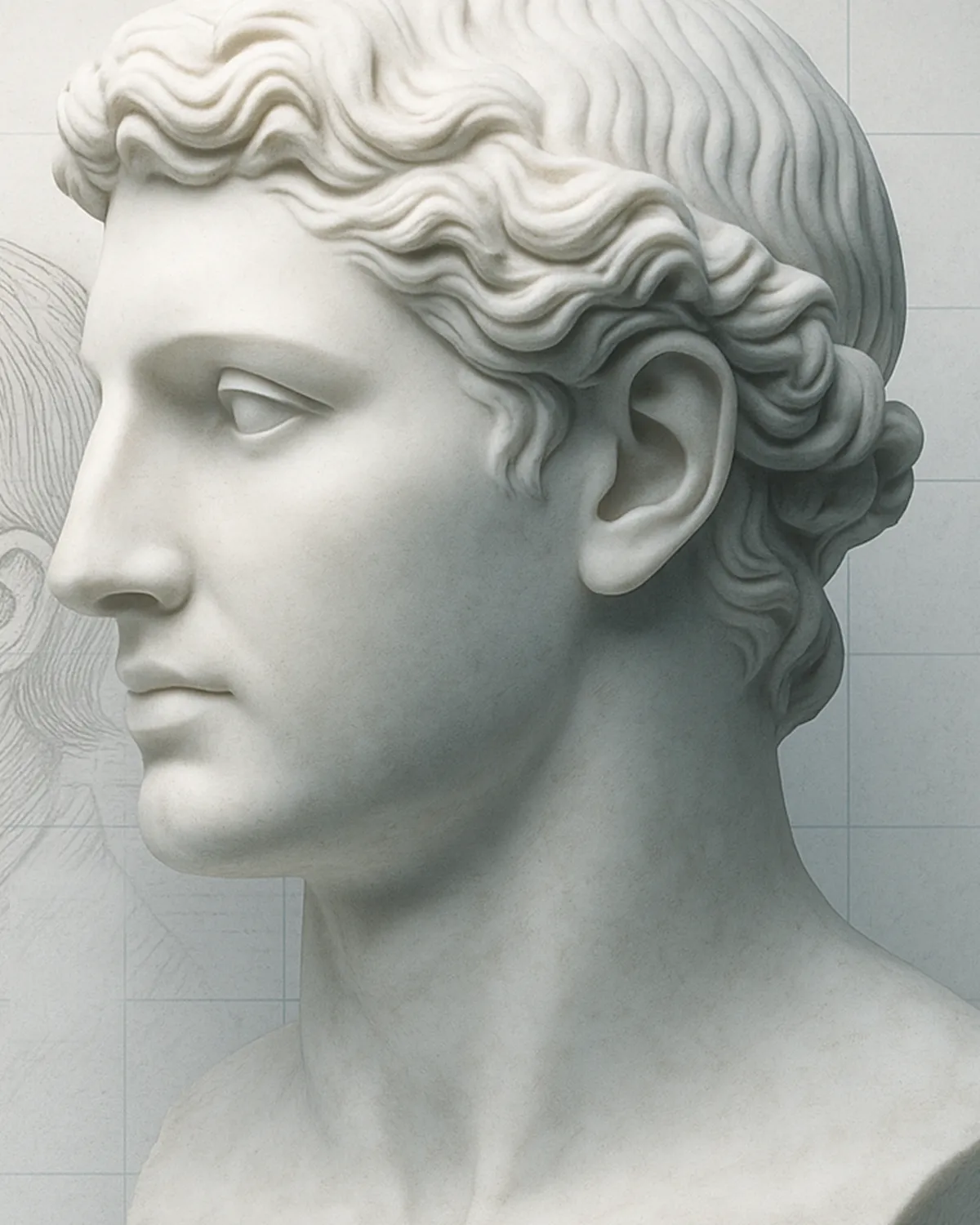

Plastic Surgery Origins: History, Advancements & Modern Practices
Plastic surgery is one of the most talked-about branches of medicine today, yet few people know where the term itself actually comes from. Far from being connected to the synthetic material we call plastic, its roots stretch back to ancient languages and early medical practices. Over centuries, what began as a means of repair and survival has transformed into a field that blends science, artistry, and innovation. In this article, we’ll explore how the word “plastic” found its place in surgery, trace the field’s earliest milestones, and look at how it continues to evolve in the modern world.

From ancient India to the battlefields of World War I to today’s modern clinics, plastic surgery has always been about one thing: restoring and reshaping the human form.
The Origin of the Term “Plastic Surgery”
You may be surprised to discover that the word plastic in “plastic surgery” is, in fact, NOT a reference to the synthetic material most of us think of today.
Greek Term “Plastikos”
Its true origin is from the Greek word “Plastikos”, which means “to mold” or “to shape.” Plastic surgery is, and has always been, about shaping and repositioning tissues to restore what has been lost or to refine what is already present. The name reflects the art and science of molding the human body, not the materials used.
The Early History of Plastic Surgery
Although plastic surgery may feel like a modern field, its foundations stretch back thousands of years. Some of the earliest documented techniques remain strikingly advanced, influencing the procedures surgeons still use today.
Early Reconstructive Techniques
One of the earliest known medical texts, the Shushruta Samhita, written in India around the 6th century, described surgical procedures still recognizable today. Among them were techniques for reconstructing noses and repairing ears.
Nasal Reconstruction in Ancient India
The forehead flap method, where skin from the forehead is rotated downward to form a new nose, was first described in Shushruta Samhita. Remarkably, this technique is still used in modern reconstructive surgery for patients who lose nasal tissue due to cancer, trauma, or other causes.
The Birth of Modern Plastic Surgery
The modern era of plastic surgery began not in luxury clinics, but on the battlefields of the world wars. Faced with devastating injuries, surgeons developed innovative techniques to restore both appearance and function, shaping the specialty as we know it today.
World War I and the Innovations of Sir Harold Gillies
The First World War marked a turning point in the history of surgery. Soldiers returned from the trenches with devastating facial injuries unlike anything surgeons had encountered before. Traditional surgical methods were not enough to restore appearance or function, which meant many of these men faced both physical limitations and profound social stigma.
Sir Harold Gillies, often called the father of modern plastic surgery, pioneered new techniques to meet this challenge. He developed innovative methods for skin grafts and “flap” surgeries, moving living tissue from one part of the body to another while preserving blood supply. These breakthroughs not only improved survival but also allowed for more natural-looking reconstructions, restoring dignity and confidence to injured soldiers.
World War II and Archibald McIndoe’s Advances
A generation later, World War II created new surgical challenges. Severe burns and complex injuries, especially among airmen, required even more advanced solutions. Sir Archibald McIndoe, Gillies’ cousin, built upon his predecessor’s work and became a pioneer in treating these patients.
McIndoe introduced refinements in reconstructive surgery that focused on both physical recovery and psychological healing. He is remembered for his compassionate care of burned pilots, who came to be known as the “Guinea Pig Club.” His innovative techniques, including his emphasis on restoring patients’ confidence as much as their function, cemented the role of plastic surgery as a field that addresses the whole person, not just the injury.
Advancements in Cosmetic Surgery
Once surgeons mastered reconstructive techniques, it wasn’t long before people began seeking enhancements beyond medical necessity. What started in secrecy among Hollywood’s elite soon grew into a global movement for self-expression and confidence.
The Rise of Aesthetic Procedures
In the mid-20th century, cosmetic surgery gained popularity among Hollywood stars and the wealthy elite. Procedures such as rhinoplasty (nose reshaping) and facelift surgery became more common, though they were often performed discreetly. At that time, cosmetic enhancements were seen as luxuries available only to a select few. Now, these procedures have become more accessible, and today, cosmetic surgery is chosen by people from all walks of life who wish to refine or enhance their natural appearance.
Popular Cosmetic Surgery: Then vs. Now
Over the decades, cosmetic surgery became more accessible and socially accepted, moving from exclusivity into more mainstream. While early cosmetic surgery focused on the face, today’s most requested procedures extend across the entire body. Popular modern cosmetic procedures include breast augmentation, tummy tucks, and liposuction, to name a few.
Plastic Surgery Today
Today, plastic surgery is a broad specialty encompassing two distinct branches: reconstructive and cosmetic surgery. Both share the same foundation of reshaping tissue with skill and artistry. However, both serve very different purposes.
Cosmetic Surgery
Cosmetic, or aesthetic, surgery focuses on enhancing natural features. Modern cosmetic procedures are highly customizable and include tummy tucks, liposuction, facelifts, and eyelid surgery. Today’s techniques emphasize balance, proportion, and natural-looking results. This is an evolution from the more dramatic outcomes once associated with cosmetic surgery.
Reconstructive Surgery
Reconstructive surgery restores form and function after trauma, illness, or congenital differences. These procedures can be life-changing, helping patients return to normalcy in both appearance and daily life. Reconstructive surgery includes examples such as breast reconstruction after mastectomy, cleft lip repair, and skin grafting for burns.
Revision Surgery
Revision surgery addresses outcomes from previous procedures, whether cosmetic or reconstructive, that did not heal as expected or no longer meet a patient’s needs. For example, breast revision surgery may involve adjusting implants, correcting asymmetry, or updating results achieved years earlier. These procedures require a high level of skill and experience, as the surgeon must work with existing scar tissue and altered anatomy to achieve a safe and natural outcome.
Modern Day Plastic Surgery
Plastic surgery today reflects centuries of progress rooted in innovation, artistry, and a dedication to restoring and enhancing the human form. Patients now have more options than ever before, making both choice and the guidance of the right surgeon essential to achieving natural, authentic results.
The Abundance of Choice for Patients
Modern plastic surgery offers patients more options than ever before. From cosmetic procedures that refine natural features to reconstructive procedures that restore form and function after illness, injury, or congenital differences, the range of possibilities has grown significantly. Procedure techniques have advanced to allow for highly customized results, making the abundance of choice possible for patients to find solutions that truly fit their needs. This also makes selecting the right guidance essential.
Choosing the Right Surgeon for Your Journey
Plastic surgery is not one-size-fits-all. Just as the specialty has two main branches—reconstructive and cosmetic—the right approach depends on your unique anatomy, goals, and lifestyle. A skilled surgeon blends medical expertise with artistic vision to achieve results that look natural and feel authentic to you.
Here are a few things to look for when choosing your surgeon:
- Board Certification/Royal College of Canada Certification — Ensure your surgeon is certified by the appropriate professional boards.
- Specialized Experience — Choose someone who regularly performs the procedure you’re considering.
- Personalized Consultations — Look for a surgeon who listens, understands, and provides honest guidance.\
- Trust and Comfort — You should feel at ease, knowing your surgeon values both your safety and your vision.
Dr. Mathew Plant believes in tailoring every procedure to the individual, ensuring results that enhance confidence without appearing overdone. Whether you are considering reconstructive surgery after an illness or injury, or cosmetic surgery to refine your appearance, choosing the right surgeon is the first step in your journey.
If you’re ready to explore your options, contact us today to schedule your consultation with Dr. Plant.



